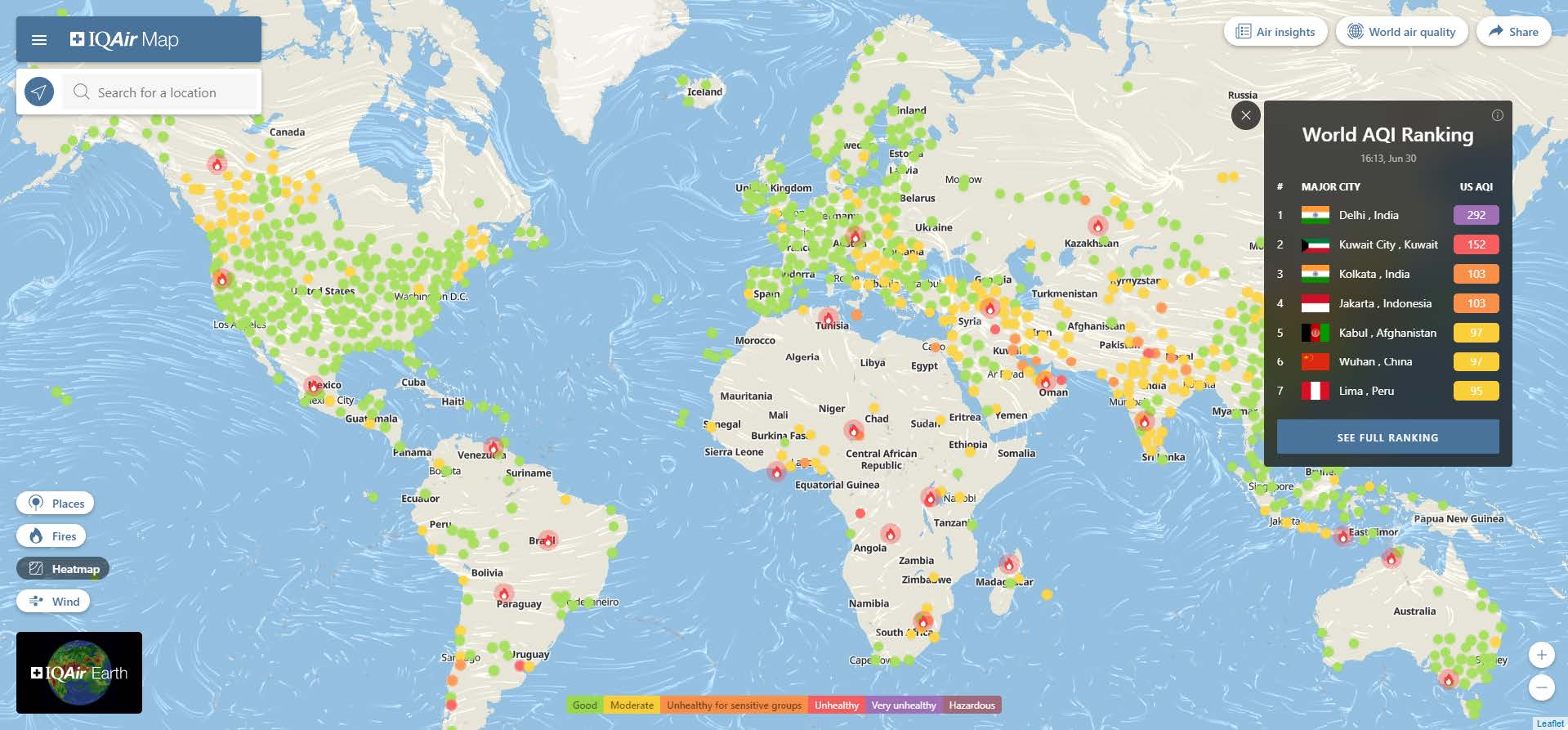
In an average year, each U.S. citizen is responsible for emitting 16 tons of carbon dioxide, ranking 13th worldwide for total emissions per capita. In aggregate terms, the United States emits 5,285 megatons of Carbon dioxide per year, ranking 2nd worldwide behind China. Carbon dioxide, among other global warming potential gases (nitrous oxides and methane,) is a key contributor to climate change and global warming. As of 2020, the annual average global temperature anomaly has risen by 1.02 degrees Celsius (1.84 degrees Fahrenheit) as compared to the long-term annual temperature average. This has contributed to lower arctic sea ice (declining at a rate of 13.1% per decade), and sea-level rise of up to 3.3 millimeters (0.13 inches) per year.
The Biden administration has recently committed to cutting emissions by half by the end of the decade at the virtual Earth Day Summit; the administration’s director of national intelligence has communicated that climate change is no longer ‘a peripheral issue but now at the center of US foreign policy’, and should be ‘fully integrated with national security’. To achieve these emission reduction goals, a broad range of policy and investment evaluations are needed to prioritize the most cost-effective and impactful changes. This formal prioritization process should account for both the costs and benefits of the underlying investment proposals.
There are two types of ‘costs and benefits’ that can affect a community or region from the consumption of goods and services: internalized or private costs (and benefits), externalized or social and environmental costs (and benefits). Internal costs (and benefits) are usually tangible and may be measured in terms of the financial price incurred (or savings from reduced prices or avoided costs). External costs (and benefits) are measured in terms of the indirect price (or savings) incurred and can be difficult to measure using across financial statements, balance sheets, or cost (or revenue) reports. These external costs (and benefits) are measured by economists in terms of social (or environmental) values. Social values are downstream effects that reflect negative (or positive) externalities, efficiencies, and environmental damages (or benefits) that may take place locally, within a state, nationally, or even internationally. It is a quantified and monetized value that may be attributed to changes in policy or investments. External social and environmental effects can include changes in air, water, or soil pollution levels, discomfort or hindrance of daily activities to the local community, or changes in risks of local damages such as those from flooding events, etc.
Costs and benefits incurred during a project are assessed from the viewpoint of the project owner as well as other stakeholders of interest (financial, social, environmental) who are involved in the production and delivery of goods and services. From the viewpoint of a project owner, private costs can include the cost of capital, labor, materials, and more that are paid by the manufacturers or service providers. From the viewpoint of consumers as stakeholders, private (internal or financial) costs can include the tangible price incurred to own or purchase the goods and services, as well as the ongoing costs of maintenance. For instance, the private cost of owning and driving a car can include the cost of purchasing a car, fuel and oil, regular maintenance, and depreciation. Therefore, if a car has an approximate mileage of 25 miles per gallon of fuel, and if on average a car owner travels 1,000 miles a year, the financial cost equates to the total amount paid by the owner for 40 gallons of fuel, as well as the other marginal operations, maintenance, and depreciation costs.
Expanding our example to include the social and environmental effects, combusting gasoline, and expelling fumes from exhaust pipes is responsible for additional pollutant emissions that contribute to the damages and dis-benefits to society (a negative value to stakeholders in the community). Pollutant emissions from fuel combustion include carbon dioxide, volatile organic carbons (VOCs), and particulate matter.
These pollutants affect surrounding communities by degrading the local air quality levels, and correspondingly, affect community health (people), corrosion of infrastructure (place), and local agriculture (planet). The best available scientific evidence shows us relationships between each incremental milligram of pollutant and its effect on people, place, and planet. This brings us to the question,
‘How widespread are these impacts? How do I understand the range of communities impacted by my emissions?’
Extensive research is continually conducted to understand this dispersion of pollutants to communities – called air quality models. An example of such a model includes the CAMx simulation, a multi-scale photochemical modeling system for gas and particulate air pollution. These models simulate the atmospheric concentrations of air pollutants over gridded urban and rural areas within a region, country, and continent. An increase in this pollutant concentration is then linked to damage functions, such as an increased risk of mortality from particulate matter exposure. To put matters into context, here is a visual representation of the air quality index from IQAirMap showing significant concentration variations in different locations. U.S.A and Canada are shown to have good – moderate air quality levels.

Source: IQAir Map
Another set of pollutants of interest are greenhouse gases, including carbon dioxide. The social cost of carbon (SCC) measures the future damages from an incremental ton of carbon emitted at present-day or in the future. SCC is modeled using a variety of considerations: accounting for socio-economic predictions such as growth in population, climate projections to account for temperature changes given a change in air-borne carbon concentrations, and its impacts including decreases in agricultural produce, sea-level rise, energy use, and other climatic impacts. The best practices approach to quantifying and monetizing damages from carbon emissions are Integrated Assessment Models (IAMs). One such model referenced by Autocase is the US Government Interagency Working Group that estimates the social cost of carbon. Carbon impacts are longer-term and global, regardless of the source of emissions. According to the Environmental Protection Agency (EPA), greenhouse gases become “well-mixed” and remain in the atmosphere for prolonged durations, contributing to long-term global damage.
Besides air pollutants, two other physical layers may be impacted by human consumption activities: soil and water. Social values attributed to pollutants affecting soil and water health are also evaluated using similar tools of measure such as costs of wastewater treatment, human health impacts, as well as ecosystem health among others. For instance, the social value of water pollution may be evaluated by understanding the downstream impacts to water bodies in terms of eutrophication, loss of aquatic life, and reduced usability of water bodies. Eutrophication reduces the oxygen supply in water, putting aquatic life at risk due to conditions such as hypoxia. Global zones of severe hypoxia and eutrophication are shown in the map below by ESRI:

Source: ESRI: Oceanic Dead Zones
Similarly soil contamination and pollution due to the presence of harmful chemicals in runoff water leads to land degradation. It makes the soil unviable for agriculture and other vegetation growth. In the absence of vegetation, there is an increased loss of any remaining soil nutrients due to leaching during high-intensity rainfall events. As the nutrients get washed away, and the soil structure weakens, it increases soil erosion that also escalates downstream water pollution by adding to turbidity and toxicity. The map below shows the level of annual erosion from agricultural land in the United States, with the blue signifying approximately 200 tons of erosion into water bodies per year within a nearby watershed. These signify areas that could be prioritized when making investments towards erosion control (including a variety of green and nature-based infrastructure).

Source: Enviro Atlas: Surface sediment erosion from agricultural lands
Overall, broad financial, social, and environmental impacts from investments play a key role in planning designs, securing funding, prioritizing projects, and generating buy-in from stakeholders. Understanding underlying local conditions, environmental pollution levels, and the incremental impact from project designs help owners/developers prioritize investments within their portfolio that secure the highest triple bottom line benefit. The team at Autocase uses extensive research to estimate social values for different types of pollutants to support project owners in decision-making and create business cases to identify project benefits beyond financial or cost implications.




